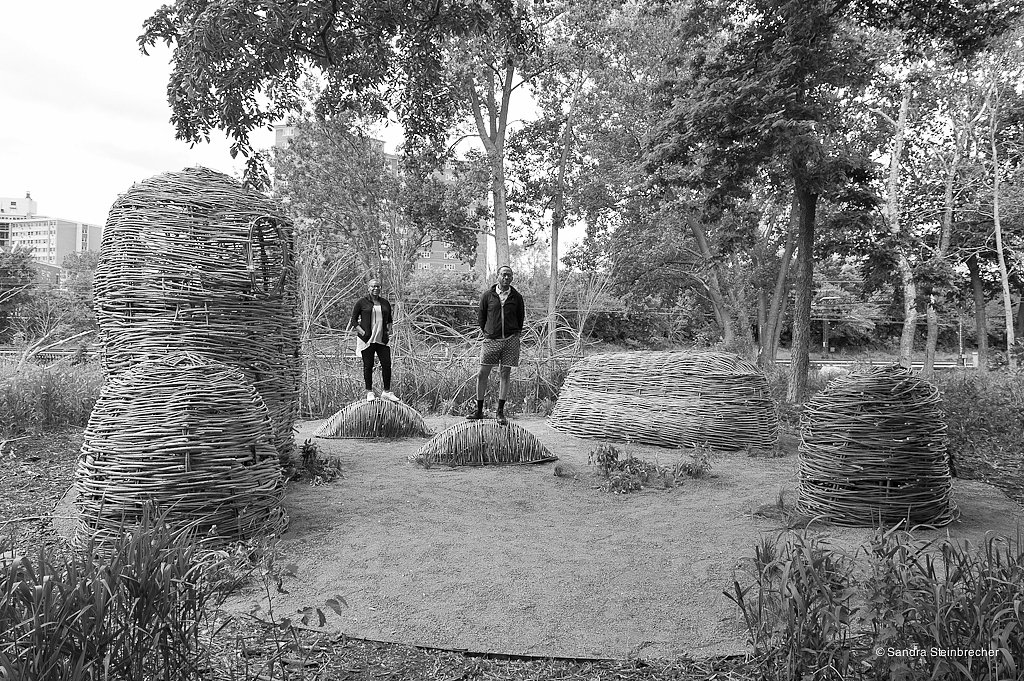Norman Teague of Norman Teague Design Studios (NTDS)

Jazz is not individualistic; it does not depend on a singular genius but on the interdepen- dent whole. Live gospel music is similar. On Sunday mornings, the voices of spirit-filled soloists rise and fall in patterns attuned to mutual propulsive logic. Music like this at the Holiness Pentecostal Church on 79th and Watts in Los Angeles inspired Charles Mingus to compose “Wednesday Night Prayer Meeting,” a joyous, swinging blues number in 6/4 rhythm. Jazz and gospel music provide ample proof that when individuals give themselves to the work at hand, a spirit of collective genius electrifies the whole.
Folayemi (Fo) Wilson and Norman Teague are the design partners of blkHaUS, whose projects are consciously animated by this same spirit of improvisation. Founded in 2016, blkHaUS embodies their mutual desire to mingle inspiration from their heritage as Americans of African descent and their train- ing in modernist design principles.
For Otherwise / Revival, Wilson and Teague have collaborated to make sweet jellyroll for terry using found objects and materials on hand in their studio. Playful combinations result, their improvisation grounded in accu- mulated work / life experience. Echoes of the Fluxus movement harmonize with the spirit of this approach. Fluxus artists prefer to use whatever material is convenient, and they privilege the invitation to create over a finished product. To them, the end result may disintegrate, wobble, or disappear, it doesn’t matter. On this point, blkHaUS slightly differs from Fluxus; blkHaUS often intentionally creates marvelously crafted finished products. Yet the grace and sturdiness of their work is itself invitational—a gorgeous platform for the creativity of others.
Projects by blkHaUS are varied: community events, public art, objects, small architec- tural spaces, or art objects. In 2018, blkHaUS organized Back Alley Jazz, a one-day event that presented musicians, artists, and des- igners in private backyards, creating a “happening” that celebrated Chicago’s his- tory of the neighborhood jam. In another instance, blkHaUS was commissioned by the Chicago Park District and Field Museum to design a public gathering spot titled Sounding Bronzeville in Burnham Wildlife Corridor. In response, they wove willow branches into biomorphic shapes, arranging them as though emerging from the soil in an inviting cluster, the sturdy shapes encouraging rest, play, climbing, sitting, and conversation.
As a design collaboration, blkHaUS depends on an interwoven spirit of jazz and gospel music. “Audience” is often a collaborator. Ideas and contributions flow from all sources —artists, designers, musicians, and educators contribute to the music of blkHaUS’s work.
– Linnéa Gabriella Spransy Neuss
